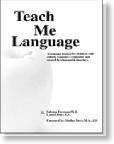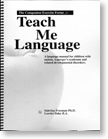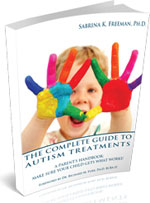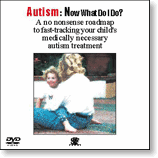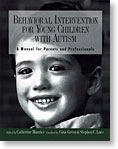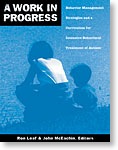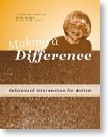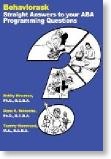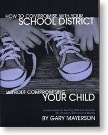treatment purveyors
Don't bet the farm on this new "therapy"
14/05/12 16:42 Filed in: autism | Asperger's Syndrome
Don’t get me wrong, I’m all into children with autism having fun in a schoolyard, but I was compelled to weigh on this when I read about a specially designed playground to encourage integration.
A graduate student and professor from Kansas State University, Katie Kingery-Page, and Chelsey King, have designed a “therapeutic landscape” for children with autism that has the goal of integration, yet is designed so as not to overwhelm the child with autism. To that end, all kinds of seemingly wonderful sections of the playground have been designed. From a “music garden” to an “edible garden/greenhouse,” we now have a new addition to the tableau of autism interventions out there: “horticulture therapy.” In addition, developers of this intervention assure that the “therapeutic landscape “ provides lots of places to hide if the child with autism gets overwhelmed. This new intervention method is said to be designed for “building sensory experience and communication.” What a utopian landscape!
For a moment, let’s ignore the fact that there is absolutely no evidence from peer-reviewed journals to support the notion that horticulture therapy is effective in ameliorating any symptoms of autism. Let’s consider that there are two very important things missing from this seemingly idyllic wonderland, if children with autism are going to be truly accommodated in the novel protocol:
Here’s the main point: if you want successful integration, the number one issue is individual child safety. For some reason, educational systems can’t seem to figure this out. They understand the importance of creating segregated sites that are like fortresses; however, the minute there is integration, the safety issue is ignored!
I suggest that these designers go back to their utopian design and look at it with new eyes. Once every safety issue is addressed, and they lose the term “therapy” to justify their design, I’m all for creating a fun place for children and their typically developing peers to interact.
A graduate student and professor from Kansas State University, Katie Kingery-Page, and Chelsey King, have designed a “therapeutic landscape” for children with autism that has the goal of integration, yet is designed so as not to overwhelm the child with autism. To that end, all kinds of seemingly wonderful sections of the playground have been designed. From a “music garden” to an “edible garden/greenhouse,” we now have a new addition to the tableau of autism interventions out there: “horticulture therapy.” In addition, developers of this intervention assure that the “therapeutic landscape “ provides lots of places to hide if the child with autism gets overwhelmed. This new intervention method is said to be designed for “building sensory experience and communication.” What a utopian landscape!
For a moment, let’s ignore the fact that there is absolutely no evidence from peer-reviewed journals to support the notion that horticulture therapy is effective in ameliorating any symptoms of autism. Let’s consider that there are two very important things missing from this seemingly idyllic wonderland, if children with autism are going to be truly accommodated in the novel protocol:
- there must be no way for a child with autism to enter or leave the space without an adult being present to allow the entry or exit,
- every single inch of that playground needs to be monitored from one area, so that there are no hidden alcoves from supervising adults. It is on the playground where safety issues are paramount! Often this is when children with autism wander off and are bullied, or worse.
Here’s the main point: if you want successful integration, the number one issue is individual child safety. For some reason, educational systems can’t seem to figure this out. They understand the importance of creating segregated sites that are like fortresses; however, the minute there is integration, the safety issue is ignored!
I suggest that these designers go back to their utopian design and look at it with new eyes. Once every safety issue is addressed, and they lose the term “therapy” to justify their design, I’m all for creating a fun place for children and their typically developing peers to interact.
Memo to Huffington Post: autism treatment is about kids, not parents
10/04/12 19:10 Filed in: autism | Asperger's Syndrome
In recognition of Autism Awareness month, the Huffington Post printed an article called 10 Things To Do After an Autism Diagnosis. The author -- Hannah Brown -- gives advice to parents on what they should do after the autism diagnosis bombshell is dropped on them. Although I applaud the helpful sentiment, ninety percent of the advice given by Brown was to parents about their own mental health and coping mechanisms and not about how to help their child.
To illustrate, although taking valium may help a parent cope, and making sure that one’s name is on all joint assets may be helpful in the event a spouse leaves the relationship, these things do nothing for the child. However, if the parent takes effective steps to improve their child’s situation, valium will be needed less and the marriage will likely be more harmonious. Life would be less stressful and something that together, as a team, the family unit can better withstand. Here are my “10 Things to Do After the Diagnosis”:
1) Find a parent group in your area that supports science-based treatment which is, currently, Early Intensive Behavioral Treatment (EIBI) based on the principles of Applied Behavior Analysis (ABA).
2) Join the Me-List on FACEBOOK and the Me-List on Yahoo. Both these groups are comprised of parents worldwide who have treatment teams up and running.
3) Find out if you live in a region where insurance companies are required to provide coverage for EIBI autism treatment. Find how parents in your region are funding their children’s treatment programs.
4) Source a list of Behavioral Consultants in your region with expertise in EIBI. If you don’t have any local expertise, here are a few national companies.
5) Phone the Behavioral Consultants you find and have them provide three references from parents who use their services. If they won’t give you references, go to the next consultant on your list. There is a certification board for this group of professionals and you can find them in your search, via zip code; however, make sure that their expertise is autism.
6) Once you hire the Behavioral Consultant, start recruiting for your treatment team.
7) Set up a training session for your team and start your program. The first couple of weeks are somewhat of a shock, but then you’ll get into a routine.
8) Start reading the right books. I have a list on the Autism Pundit bookshelf.
9) Sign-up for the Association for Science in Autism Treatment’s Newsletter and get savvy about how to differentiate science from quackery!
10) Breathe. If you follow the above steps, your child will reach his or her potential, and you have no idea how great that potential may be!
As a parent who has been in the autism universe for over two decades, I’m of the view that these steps are going to get you where you need to go. For now, ignore all the other noise out there. Your job is to get your child into a treatment program A.S.A.P. Nothing else will matter until your child has access to high quality treatment.
To illustrate, although taking valium may help a parent cope, and making sure that one’s name is on all joint assets may be helpful in the event a spouse leaves the relationship, these things do nothing for the child. However, if the parent takes effective steps to improve their child’s situation, valium will be needed less and the marriage will likely be more harmonious. Life would be less stressful and something that together, as a team, the family unit can better withstand. Here are my “10 Things to Do After the Diagnosis”:
1) Find a parent group in your area that supports science-based treatment which is, currently, Early Intensive Behavioral Treatment (EIBI) based on the principles of Applied Behavior Analysis (ABA).
2) Join the Me-List on FACEBOOK and the Me-List on Yahoo. Both these groups are comprised of parents worldwide who have treatment teams up and running.
3) Find out if you live in a region where insurance companies are required to provide coverage for EIBI autism treatment. Find how parents in your region are funding their children’s treatment programs.
4) Source a list of Behavioral Consultants in your region with expertise in EIBI. If you don’t have any local expertise, here are a few national companies.
5) Phone the Behavioral Consultants you find and have them provide three references from parents who use their services. If they won’t give you references, go to the next consultant on your list. There is a certification board for this group of professionals and you can find them in your search, via zip code; however, make sure that their expertise is autism.
6) Once you hire the Behavioral Consultant, start recruiting for your treatment team.
7) Set up a training session for your team and start your program. The first couple of weeks are somewhat of a shock, but then you’ll get into a routine.
8) Start reading the right books. I have a list on the Autism Pundit bookshelf.
9) Sign-up for the Association for Science in Autism Treatment’s Newsletter and get savvy about how to differentiate science from quackery!
10) Breathe. If you follow the above steps, your child will reach his or her potential, and you have no idea how great that potential may be!
As a parent who has been in the autism universe for over two decades, I’m of the view that these steps are going to get you where you need to go. For now, ignore all the other noise out there. Your job is to get your child into a treatment program A.S.A.P. Nothing else will matter until your child has access to high quality treatment.


